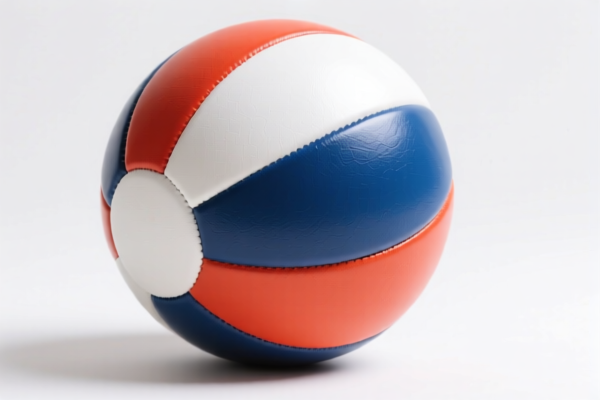| HS Code | Official Doc | Tariff Rate | Origin | Destination | Effective Date |
|---|---|---|---|---|---|
| 9506694000 | Doc | 42.9% | CN | US | 2025-05-12 |
| 3926909910 | Doc | 42.8% | CN | US | 2025-05-12 |
| 6307907500 | Doc | 34.3% | CN | US | 2025-05-12 |




Declaration Analysis: PU BALL – HS Code Breakdown & Customs Considerations
Based on the provided information, you have three potential HS codes associated with your "PU BALL" declaration. Here's a detailed breakdown to help you determine the most accurate classification, along with relevant customs considerations:
Understanding HS Codes:
The Harmonized System (HS) code is a globally standardized system of names and numbers used to classify traded products. It's crucial for accurate tariff determination, trade statistics, and regulatory compliance. Let's break down the structure and meaning of each code provided:
- First 2 Digits (Chapter): Indicate the broad category of the product.
- First 4 Digits (Heading): Further refine the product category.
- First 6 Digits (Subheading): Provide a more specific description.
- Last 2 Digits (Part Number): Represent the most detailed classification within the subheading.
1. HS Code: 9506.69.40.00 – Articles for Physical Exercise, Gymnastics, etc. (Balls)
- 95: Chapter 95 – Toys, Games and Sports Equipment; Miscellaneous Recreational, Sport, and Optical Articles.
- 06: Heading 9506 – Articles and equipment for general physical exercise, gymnastics, athletics, other sports (including table-tennis) or outdoor games, not specified or included elsewhere in this chapter; swimming pools and wading pools; parts and accessories thereof.
- 69: Subheading 9506.69 – Balls, other than golf balls and table-tennis balls.
- 40.00: Part Number 9506.69.40.00 – Other: Noninflatable hollow balls not over 19 cm in diameter.
Applicability: This code is most suitable if your PU ball is specifically designed for sports, exercise, or recreational activities and meets the criteria of being a non-inflatable hollow ball under 19cm in diameter.
Tax Implications:
- Basic Duty: 5.4%
- Additional Duty: 7.5%
- Post April 2, 2025: Additional Duty increases to 30%
- Total Tax: 42.9%
2. HS Code: 3926.90.99.10 – Plastics Articles (Laboratory Ware)
- 39: Chapter 39 – Plastics and articles thereof.
- 26: Heading 3926 – Articles of plastics and articles of other materials of headings 3901 to 3914.
- 90: Subheading 3926.90 – Other.
- 99.10: Part Number 3926.90.99.10 – Other Laboratory ware.
Applicability: This code is applicable only if your PU ball is specifically manufactured as laboratory ware (e.g., used for mixing, measuring, or containing substances in a lab setting). This is unlikely unless it has specific lab-related features.
Tax Implications:
- Basic Duty: 5.3%
- Additional Duty: 7.5%
- Post April 2, 2025: Additional Duty increases to 30%
- Total Tax: 42.8%
3. HS Code: 6307.90.75.00 – Textile Articles (Toys for Pets)
- 63: Chapter 63 – Other made up articles, including dress patterns.
- 07: Heading 6307 – Other made up articles, including dress patterns.
- 90: Subheading 6307.90 – Other.
- 75.00: Part Number 6307.90.75.00 – Toys for pets, of textile materials.
Applicability: This code is relevant only if your PU ball is designed and marketed as a toy for pets and is made of textile materials.
Tax Implications:
- Basic Duty: 4.3%
- Additional Duty: 0.0%
- Post April 2, 2025: Additional Duty increases to 30%
- Total Tax: 34.3%
Recommendations & Key Considerations:
- Material Composition: The primary material of your PU ball is crucial. Is it predominantly plastic, textile, or something else?
- Intended Use: What is the primary purpose of the ball? Sports/exercise, laboratory use, or pet toy?
- Detailed Description: Provide a more detailed description of the ball's features, dimensions, and intended use to help determine the most accurate HS code.
- Certification: Depending on the final HS code, you may need to provide specific certifications (e.g., safety certifications for toys, material composition reports).
- Post-April 2, 2025 Tariffs: Be aware of the upcoming tariff changes on April 2, 2025, and factor them into your cost calculations.
- Single Declaration: Ensure consistency in your declaration. If you are declaring multiple items, use the most appropriate HS code for each based on its specific characteristics.
Disclaimer: This analysis is based on the information provided and general HS code guidelines. The final determination of the correct HS code rests with customs authorities. It is always recommended to consult with a licensed customs broker or seek an official binding ruling from customs for definitive classification.
Customer Reviews
The site provided a clear explanation of the 34.3% tariff for the 6307.90.75.00 code. It was easy to understand, though I still need to confirm with a customs broker.
I was confused about the different HS codes for my PU ball, but this page explained the 3926.90.99.10 code and its lab-specific use. Perfect for my needs.
The breakdown of each HS code was great, but I wish there was a way to filter by product use, like sports or pet toys. Still, very informative.
This site gave me the exact HS code for my PU ball and explained the 42.9% tariff clearly. Very helpful for my export plans.